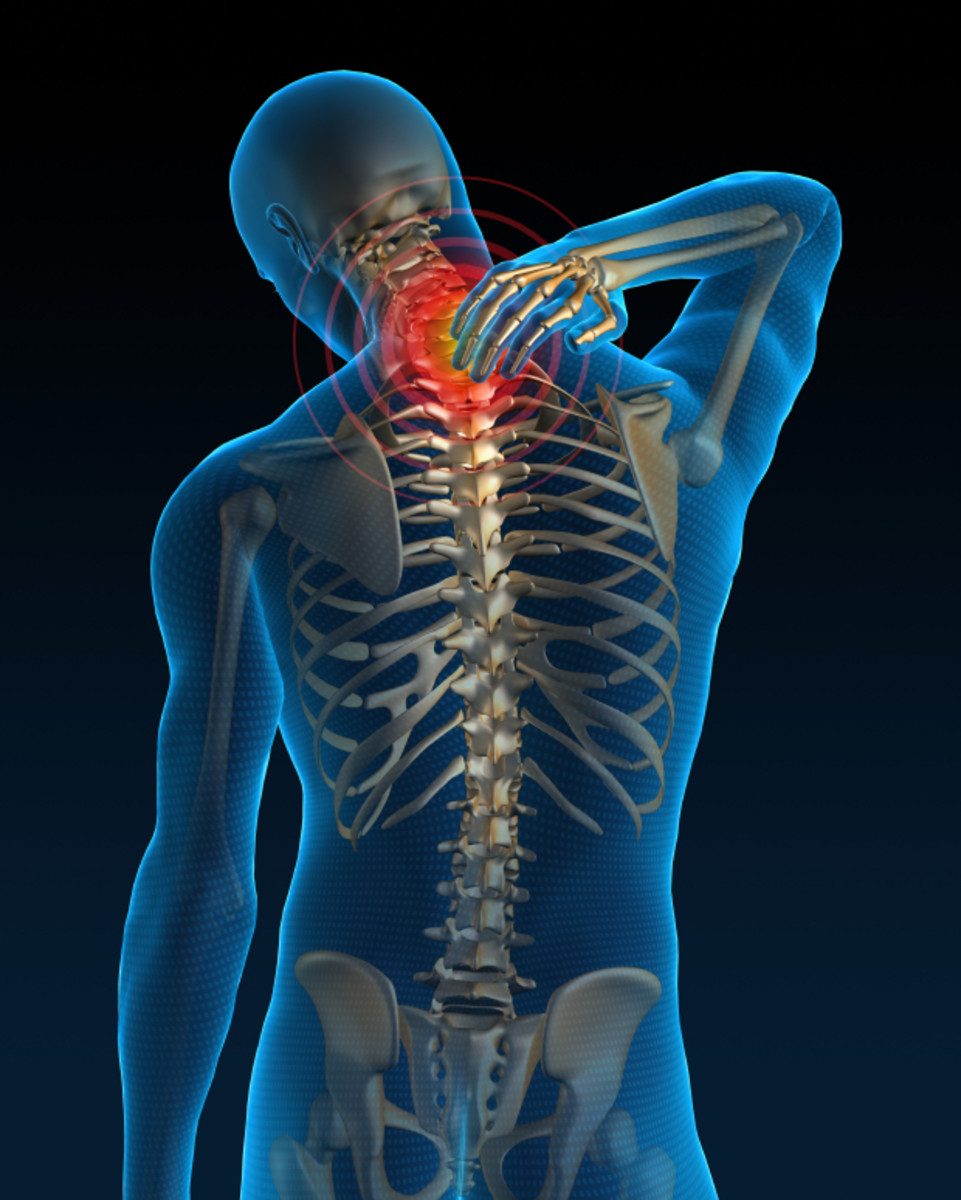Back Pain: Home Managements #4 - Strengthening exercises for Abdominal muscles Part 1
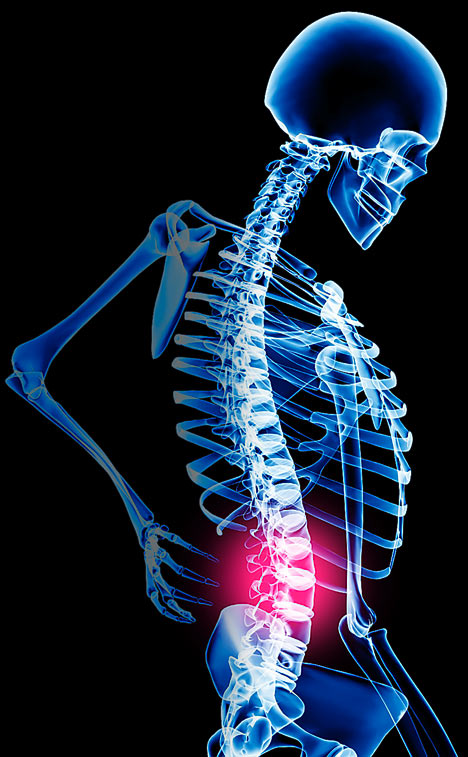
Introduction
In order to prevent the recurrence of low back pain, there is a need to strengthen the concerned muscles that are responsible for maintaining the normal lumbosacral function. The treatment aims at isolating the weak muscles and strengthening them. The muscles which are mainly responsible for the lumbosacral function are mainly the abdominal muscle, the muscles of the back (the Erector Spinae) and the muscles of the thigh (the Quadriceps and the Hamstrings)Of these, the abdominal muscles play an important role to maintain the lumbosacral function intact.
The abdominal wall is made mainly of muscles. On either side of the midline there are 4muscles.They are the External Oblique, the Internal Oblique, the Transverse Abdominis and the Rectus Abdominis. Two small muscles, the Cremastor and the Pyramidalis, are also present. The External Oblique, the Internal Oblique and the Transverse Abdominis are large flat muscles placed in the anterolateral part of the abdominal wall (ie. on either side of the midline).Each of these muscles ends in an extensive aponeurosis (ie. a tendon like tissue which helps the muscles to get attached to each other) as it reaches the midline. The aponeurosis of the right and left sides decussate to form a midline band called the Linea Alba. The Rectus Abdominis runs vertically on either side of the Linea Alba.
The actions of the main muscles of the abdominal wall are the following.
- Flexion of the trunk or the lumbar spine – done by Rectus Abdominis Muscles.
- Lateral flexion of the trunk – done by one sided contraction of the Oblique Muscles.
- Rotation of the trunk –done by the combined contraction of the External Oblique Muscle of the same side together with the contraction of the opposite Internal Oblique Muscles.
Strengthening Exercise – Rectus Abdominis Muscles.
It consists of Sit-up and Sit-back exercises, which are explained below.
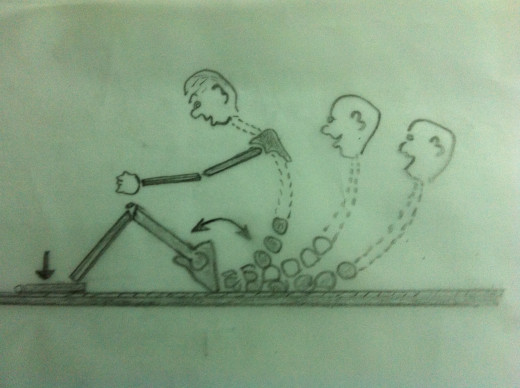
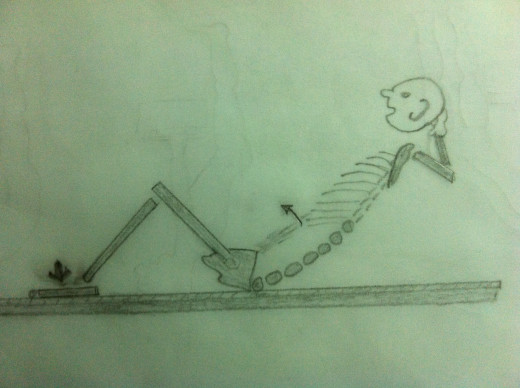
“Sit-Up” Exercise
The patient lies supine (ie. lying with the face upwards) on a firm bed with the hips and knees flexed and the feet flat on the bed. The patient keeps both his extended arms on the bed at his sides.
The exercise is done in five stages.The progression of the exercise from one stage to the next must be gradual. Bouncing and quick movements must be avoided.
- Stage 1.Raise the head and shoulders from the bed keeping the shoulder blades flat on the bed. Slide the arms towards the feet.
- Stage 2.Raise the head and shoulders further from the bed, still keeping the shoulder blades flat on the bed.
- Stage 3.Raise the shoulder blades also from the bed with the arms extended forward towards the feet .
- Stage 4. When a full flexed position is attained the hands are placed behind the head with the flexed elbows facing forward.
- Stage 5.Now the “Sit –Up” is done with the hands behind the head and the flexed elbows held behind the head.
Hold in this “Sit-Up” position for 5 seconds and then slowly and gently reverse back to the original starting position. Repeat this exercise 5-6 times to start with and slowly may be progressed to 10 times.
If this exercise is done properly, the patient gets the feeling that the lumbar spine is being “peeled” of from the bed. In this sequence there is a gradual evolvement of lumbar khyphosis from the physiologic lordosis.
Repeated” Sit-UP”exercises gradually increases the strength of the Rectus Abdominis.
Endurance of the Rectus Abdominis muscles can be achieved by adding an isometric component to the “Sit- Up” exercise. This can be achieved by holding the trunk at various degrees of flexion. The degree of flexion at which “holding” is the easiest is the full “Sit-Up” position. With lesser and lesser trunk flexion,”holding”will be more and more difficult. This is because more and more upper body weight is imposed on the Rectus Abdominis muscle and hence more resistance is imposed on muscles.
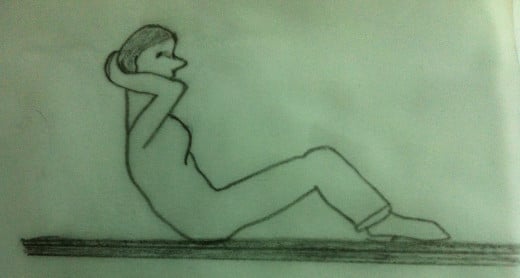
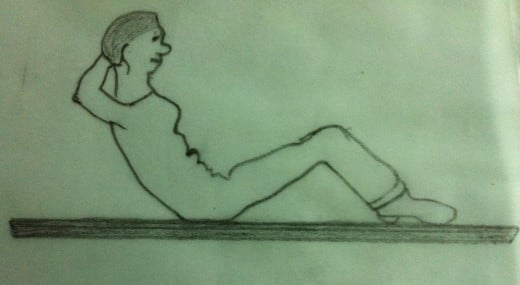
“Sit-Back” Exercises
The “Sit-Back” exercises are also very effective in strengthening the Rectus Abdominis muscle. The “Sit-Up” exercises are very effective and comfortable for those patients who have weak Rectus Abdominis muscle.
The patient sits with the hips and knees flexed and the feet flat on the bed. The hands are placed behind the head with the flexed elbows facing forward. The patient slowly leans back a few degrees. The patient holds the trunk at that point that is possible and comfortable to hold. Initially he holds this comfortable position with the use of hands that are placed behind the head. Hence this position does not exert any demand on the Rectus Abdominal muscles. This is the starting position.
Gradually the patient leans back a few more degrees and the body is held in this newly acquired position. This position demands the contraction of the Rectus Abdominis muscle. Initially, the hands are placed behind the head with the flexed elbows facing forwards. (ie. as in the starting position). Slowly the flexed elbows which are facing forwards are brought backwards and held behind the head, with the hands still behind the head. This newly attained position of the arms increases the demand on the Rectus Abdominis muscle. Hold in this position for 5seconds and then reverse back to the original starting position. Repeat this exercise 5-6 times to start with and then may be slowly and gradually progressed to 10 times step by step. As a progression the degrees of “leaning back” may be increased till a maximum “leaning back” is achieved.
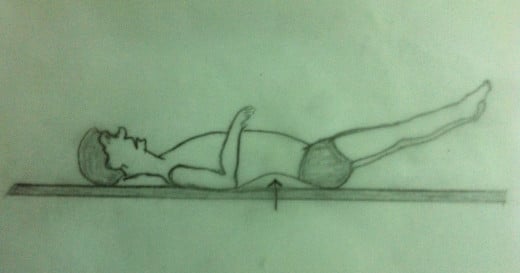
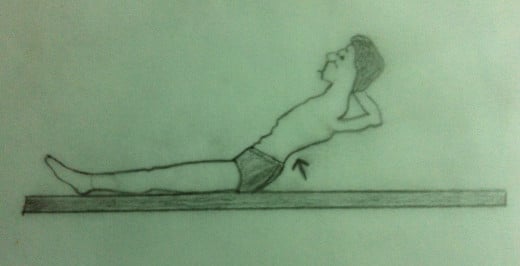
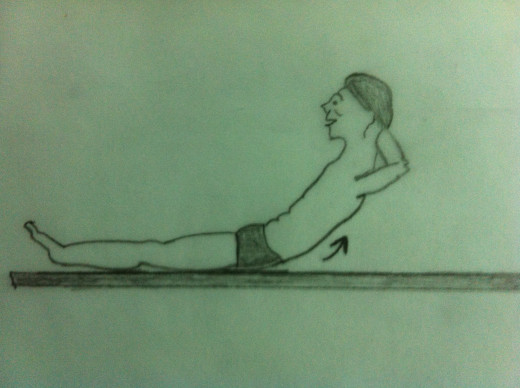
Exercises to be avoided
- Straight leg raising Exercises- Conventionally it is advocated that “Straight leg raising” is an ideal exercise for strengthening the abdominal muscles. But it is not true. When the straight legs are raised, it is primarily done by Iliopsoas Muscle (Hip Flexor) up to 30⁰ and not by the abdominal muscles. Moreover when straight leg raising is done the low back gets arched more, which is to be avoided.
- “Sit-Up” Exercise with legs straight- If “Sit-Up” exercise is done with the legs fully extended, the flexion of the spine is primarily done by the Iliopsoas muscle (Hip Flexor) up to 30⁰ and not by the abdominal muscles. “Sit-Up”exercise with leg straight, if attempted, there is a tendency to arch the low back. This is so, especially, when the abdominal muscles are weak.
The “Sit-Up” exercise can be done if the abdominal muscles are strong enough to allow the patient to come up without arching the low back.

